What is a channel split system: varieties and device options
Issues of ventilation and air conditioning should be considered even before the construction of the house, at the design stage. Especially if you plan to install an integrated structure - for example, a channel system. This is a well-known fact.
If you plan to build a house or make major repairs in old housing, it will not be out of place to find out what a channel split system is and how it works. Initial theoretical knowledge presented in this article will help to choose the right air conditioner, as well as to understand its design and types.
You will learn all about the structural specifics and the principle of operation of duct climate control equipment from our article. We will talk about the varieties of equipment of this type used in air conditioning. We will get acquainted with the technical characteristics and nuances of installation.
The content of the article:
What are the channel split systems
There are many technically complex engineering communications solutions being implemented in factory floors, multi-storey shopping and entertainment centers and sports centers. More often they are multisystems equipped with additional devices and interfaced with ventilation systems.
An effective built-in air conditioning system has proven itself in servicing production, public, and entertainment facilities, the main feature of which is a large area. But now it is often used to equip private cottages or apartments with high ceilings.
We will focus on channel split systemssuitable for domestic use - they are simpler in design, smaller in size, but the basic principles of functioning are the same.
Design and principle of operation
Duct type air conditioners are designed, like other similar designs, to maintain a comfortable microclimate in the premises. Their peculiarity is that they are designed to service large areas, which are often divided into separate segments.
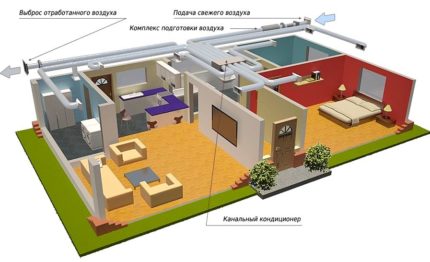
On the market you can find many offers designed specifically for private use - designed for 4-5 rooms, of limited length and performance.
The design of the channel air conditioner completely repeats the structure of the traditional split system: one unit is mounted inside the building, the second - outside. The main difference is that the internal structures are located above the suspended ceilings, and not just fixed on the wall. There are models that can easily be placed in a closet, as well as air conditioners built into the wall.
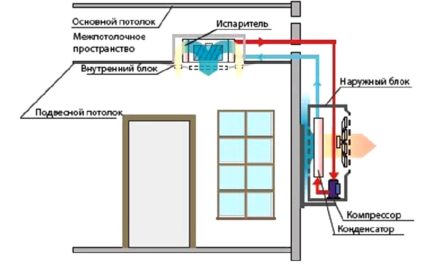
The external unit has standard sizes and design. It contains the nodes responsible for cooling and uninterrupted operation:
- chokes;
- compressor;
- condenser with heat exchanger;
- fan;
- air filters;
- Sensors
- automation;
- Failure alert system elements.
Some models that require a large amount of condensate to drain have a drain pump.
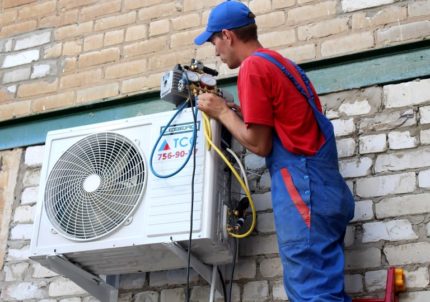
It is important to keep the manufacturer’s recommended height difference so that there are no technical problems after startup. Internal channels look different, depending on the serving area and tasks.
But the filling of the indoor units is about the same:
- evaporator with heat exchanger;
- fan;
- condensate collector;
- electronic board with sensors.
A small number of working elements is justified by minimizing noise in the living space. All parts are assembled in a durable case, which is disguised as false walls and ceilings.
Many choose built-in “invisible” air conditioning systems because of the installation method and aesthetics: only grilles for air intake or forcing out.
The fan of the channel device is very powerful. Unlike the conventional axial model, through which air passes freely, it must move volume flows with increased aerodynamic drag.

A throttle that compresses gas is installed on the outside of the circuit. As a result, the gas condenses - turns into a liquid. When it gets inside the room, it finds itself in a low-pressure zone, heats up, evaporates and reverts to a gas state. Thus, the external radiator is called the condenser, and the internal - the evaporator.
A feature of the system is heat transfer due to the conversion of freon from the gaseous phase to the liquid phase and vice versa. In cooling mode, the evaporator heat exchanger lowers the room temperature.
But some modern systems work according to a double scheme, that is, during the cold period they, on the contrary, can increase the temperature inside the building, of course, to a limited extent. Limitations depend on the outdoor temperature. Maximum parameters are usually indicated by the manufacturer in the operating instructions.
Types of built-in air conditioners
Channel split systems are classified according to different technical parameters, but the pressure or pressure, which is measured in Pascals, is considered the main one.
According to the pressure force of the structure, they are divided into 3 groups:
- Low pressure - up to 40-50 Pa.
- Medium head - up to 100-150 Pa.
- High pressure - 250-300 Pa or more.
Low pressure systems are the cheapest and easiest to install.They are installed in domestic premises, offices, private homes. Often they are fastened behind cladding panels in the corridors and hallways, spacious halls and living rooms.

Medium-pressure structures are more complex, they already need a pump to drain the condensate. They provide greater air circulation by mixing air from the street.
Medium-pressure structures are installed in large cottages, shops, warehouses, training and sports centers.
The most powerful high-pressure systems are designed to serve a large number of spacious rooms. They are equipped with an extensive network of ducts, sophisticated electronics and many sensors.

Also channel air conditioners are divided into:
- ordinary;
- inverter.
The compressor of conventional systems is not regulated, therefore they always operate with the same power, and a simple automatic shutdown is used to control the indoor climate. For this reason, such equipment is also called "Start / Stop".
The name of inverter systems appeared along with a new element in the design - an inverter, which allows you to smoothly change the power.
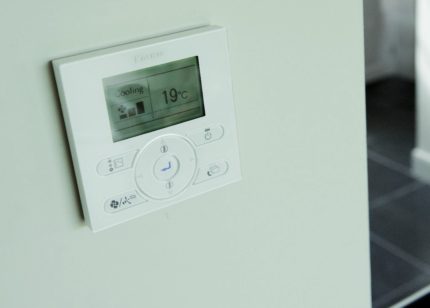
Developers advertise inverter models, often exaggerating their benefits. They argue that the newer generation equipment is economical, quieter and more reliable. But no one conducted the tests and there are no specific statistics on this.
Both models are quiet - after all, all the "noisy" processes occur in the outdoor unit, on the street. All types of equipment serve for a long time and over time they need only a partial replacement of parts. Disputes are underway regarding energy efficiency, because, unlike inverter air conditioner, A conventional split system is periodically turned off and does not waste power.
But it is already becoming clear that the future lies with inverter split systems. It is on the expansion of this assortment that advanced manufacturers emphasize.
There are other ways of dividing channel air conditioners into types:
- by appointment (home and production);
- by service area;
- by availability of additional features, for example, the ability to mix air.
Manufacturers come up with some classifications - thanks to them, customers make choices faster.
Technical Overview
And now we will consider what characteristics affect the quality of a ducted air conditioner. Knowing the exact selection criteria, you can significantly narrow your choice.
Like any volatile system, channel split systems have a lot of technical data that require attention when buying and installing. Note the most important:
Also, you need to pay attention not only to the length of the ducts, pipes or cables, but also to the sizes of the ducted air conditioning units.
Need to find a place to external unitsuitable for the installation conditions, as well as to calculate the space in the room so that, if necessary, it was possible to service the "filling" of the module. They also produce ultra-narrow models specially designed for installation in living rooms.
The anti-icing system, the air mass direction system, the function of remembering the settings set by the user, adjusting the fan rotation speed are welcome.
Advantages and disadvantages in comparison
Channel systems are popular with everyone who cares about the comfortable atmosphere inside the house and at the same time tries not to flaunt all communications.
Air conditioning experts and regular users note the following advantages in using channel equipment:
- there is no indoor wall unit that requires space on the wall and often does not fit into the interior design;
- installation of the system accompanies good air exchange in all areas of the house;
- a powerful indoor unit can serve several small rooms;
- noise from working elements is minimized.
When installing a channel system, you can combine it with ventilation, while saving on the purchase of equipment and installation.
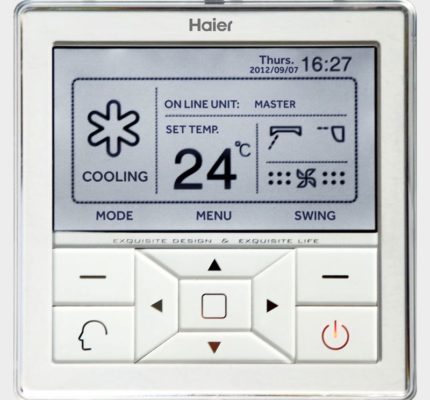
But there are also disadvantages, which sometimes lead homeowners to install no less effective, but easier to install traditional wall split systems.
The disadvantages include:
- complex, requiring additional knowledge and professionalism, installation;
- arrangement of suspended structures for masking channels;
- the impossibility of creating different temperature regimes in neighboring rooms - the temperature will be the same everywhere.
But the main problem seems to be competent design, selection, calculation and installation of the structure. It is clear that these are additional costs, and considerable. If the system is installed with violations, the minimum nuisance will be a loud noise, echoing throughout the house, and the maximum - an expensive alteration.
Conclusions and useful video on the topic
General information about ducted air conditioners:
Theory and practical experience:
An example of installing a channel split system in a city apartment:
For a standard urban "two-room apartment" with ceilings of 2.5 or a small country house, which is most often used seasonally, in the warm period, a channel system is not needed. But for a spacious apartment with high ceilings or a cottage, a split-type channel system can be the best solution to improve the microclimate in the rooms.
To install the equipment, you have to make friends with fitters and fitters, you cannot cope with the installation of a technically complex unit yourself. It will be much more expensive than a conventional split system. But the result will be higher - you will get a reliable design that provides you, when necessary, with coolness, warmth or just fresh air.
Want to talk about how your ducted air conditioning system works? Do you have useful information on a topic worth sharing with site visitors? Please leave comments in the form below the block, post photos and ask questions.

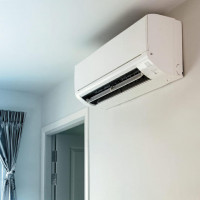 What is a split system: device and principle of operation of typical air conditioning systems
What is a split system: device and principle of operation of typical air conditioning systems  What is a multi split system: principle of operation + installation and connection rules
What is a multi split system: principle of operation + installation and connection rules 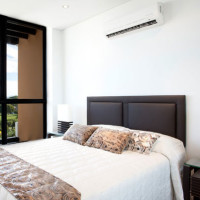 Where to get the air conditioning water drain: norms and options for the drainage system for a split system
Where to get the air conditioning water drain: norms and options for the drainage system for a split system 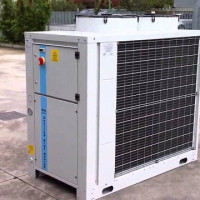 What is a chiller: device features, selection and installation rules
What is a chiller: device features, selection and installation rules 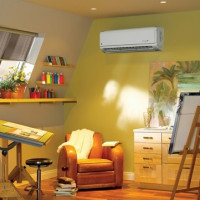 Split system for 2 rooms: how the equipment is arranged and works + the nuances of choosing such a technique
Split system for 2 rooms: how the equipment is arranged and works + the nuances of choosing such a technique 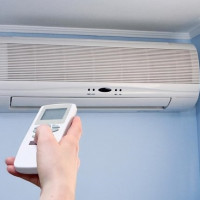 Air conditioning and split system - what is the difference? Differences and selection criteria for climate technology
Air conditioning and split system - what is the difference? Differences and selection criteria for climate technology  How much does it cost to connect gas to a private house: the price of organizing gas supply
How much does it cost to connect gas to a private house: the price of organizing gas supply  The best washing machines with dryer: model rating and customer tips
The best washing machines with dryer: model rating and customer tips  What is the color temperature of light and the nuances of choosing the temperature of the lamps to suit your needs
What is the color temperature of light and the nuances of choosing the temperature of the lamps to suit your needs  Replacement of a geyser in an apartment: replacement paperwork + basic norms and requirements
Replacement of a geyser in an apartment: replacement paperwork + basic norms and requirements